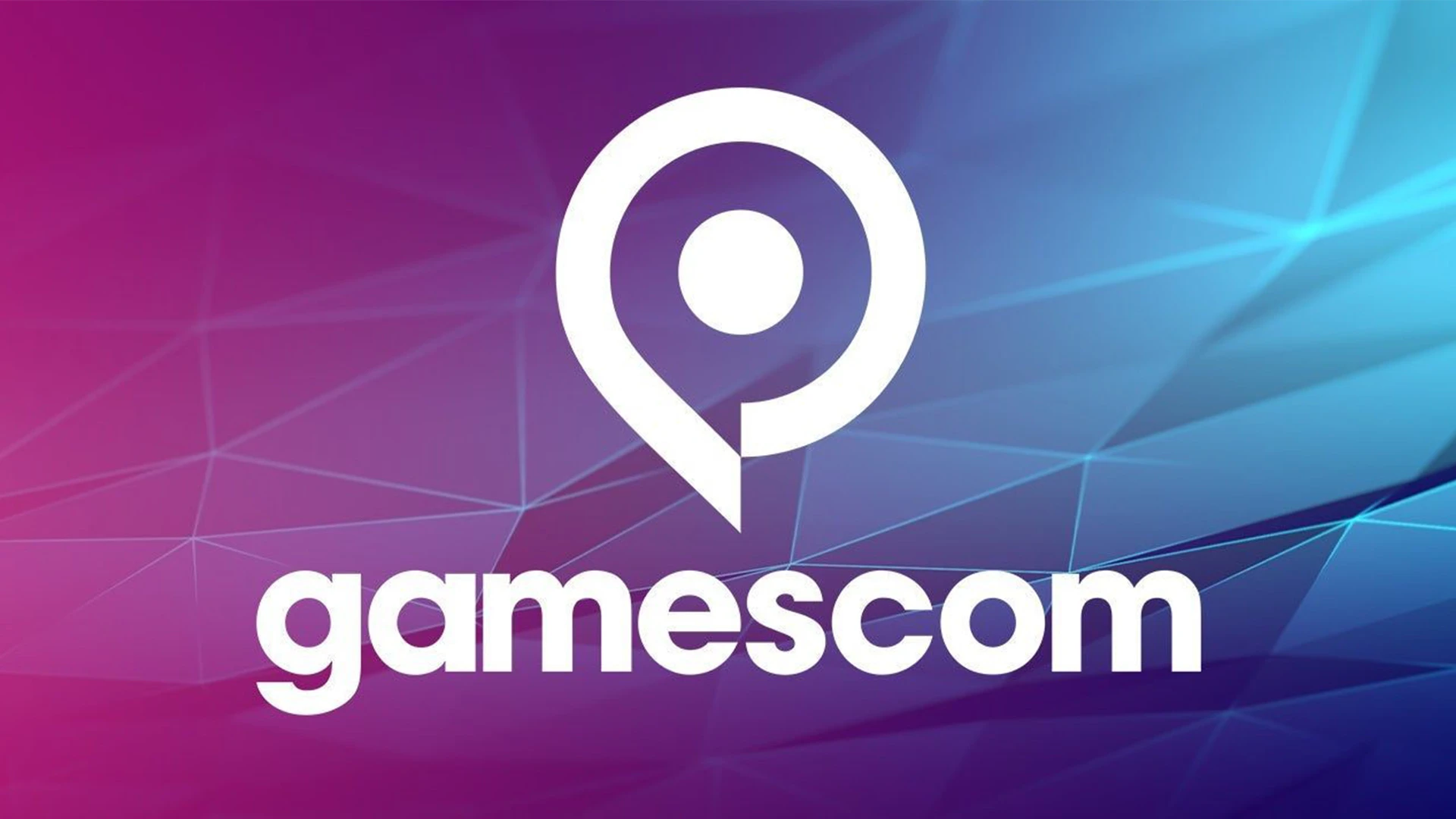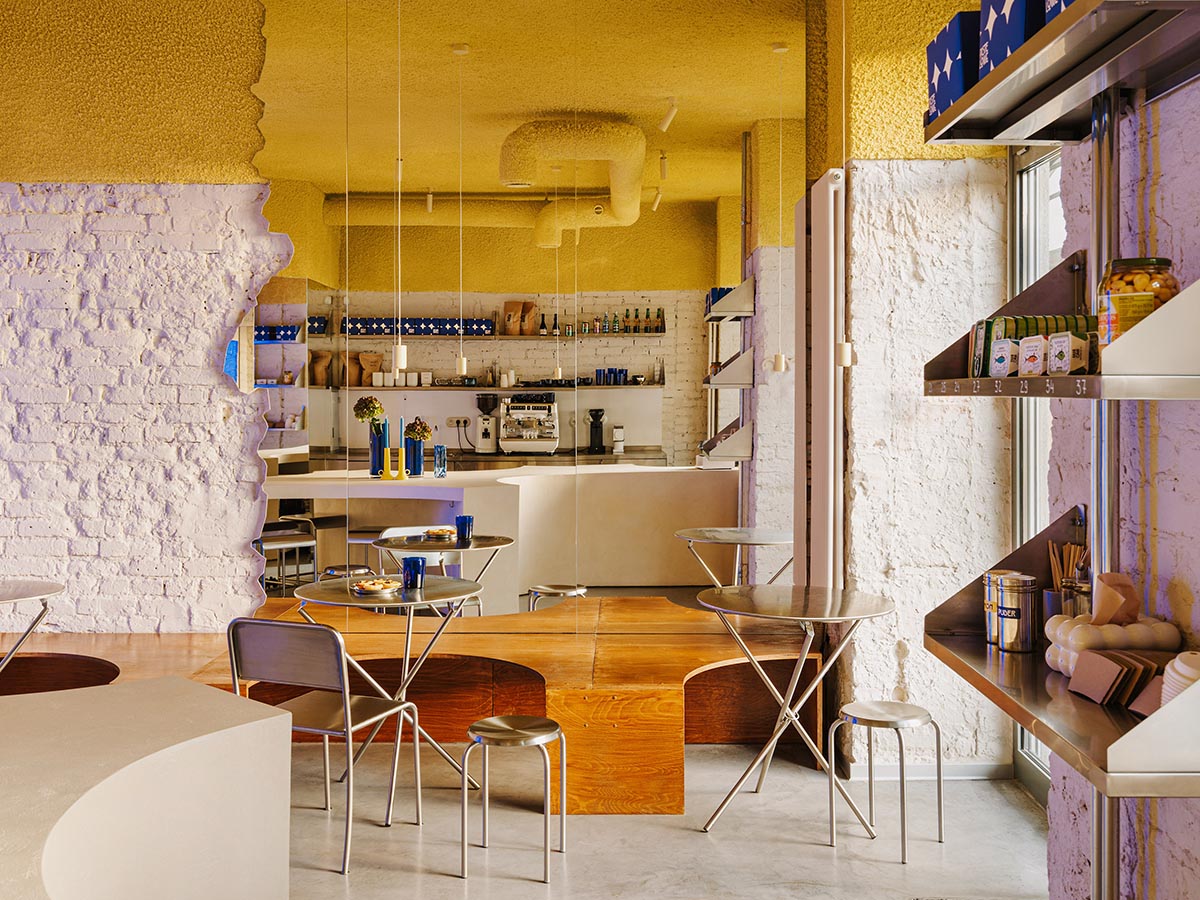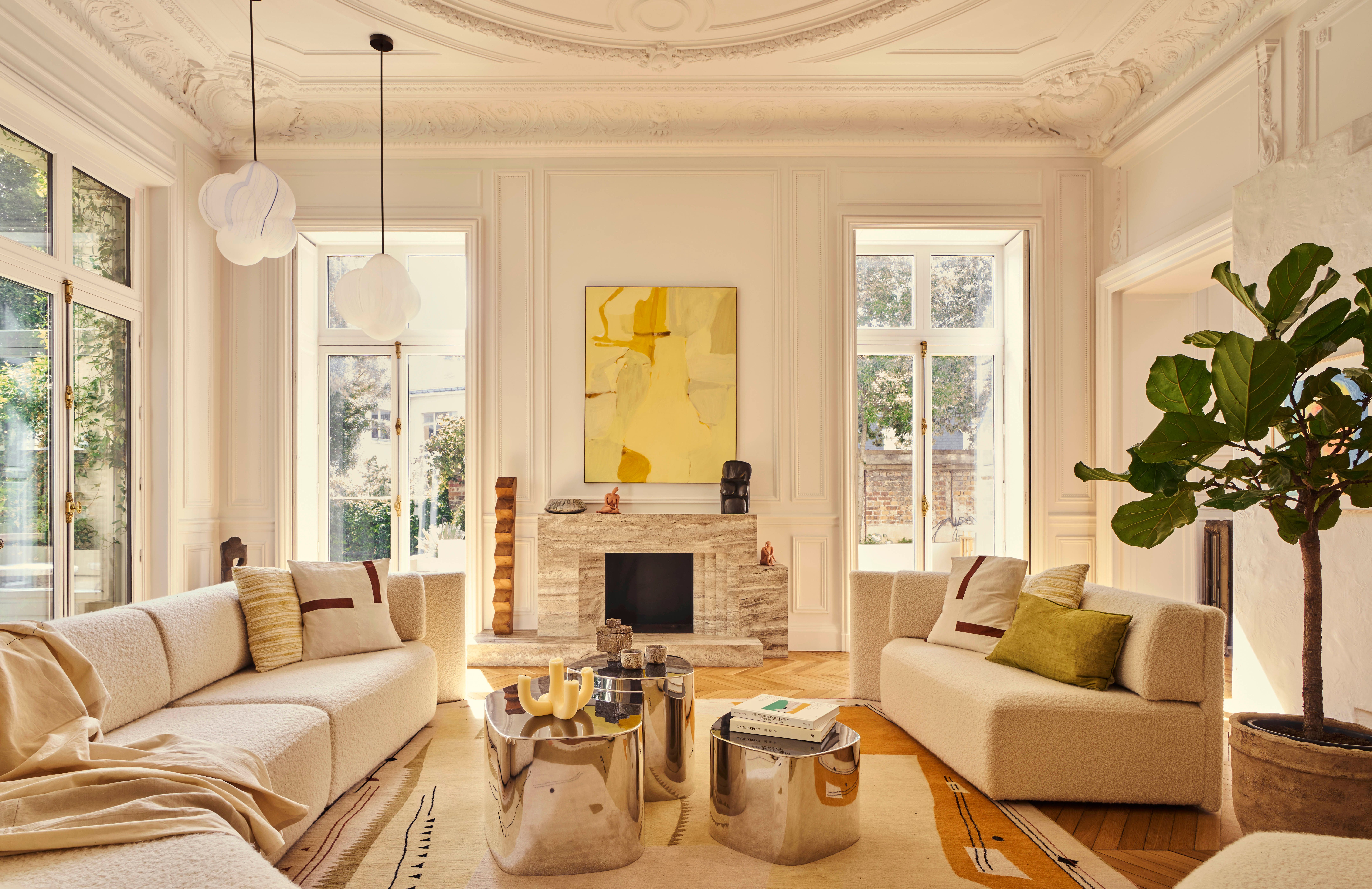Inside the thinking behind Frontify Futures' standout brand identity
Who knows where branding will go in the future? However, for many of us working in the creative industries, it's our job to know. So it's something we need to start talking about, and Frontify Futures wants to be the platform where that conversation unfolds.
This ambitious new thought leadership initiative from Frontify brings together an extraordinary coalition of voices—CMOs who've scaled global brands, creative leaders reimagining possibilities, strategy directors pioneering new approaches, and cultural forecasters mapping emerging opportunities—to explore how effectiveness, innovation, and scale will shape tomorrow's brand-building landscape.
But Frontify Futures isn't just another content platform. Excitingly, from a design perspective, it's also a living experiment in what brand identity can become when technology meets craft, when systems embrace chaos, and when the future itself becomes a design material.
Endless variation
What makes Frontify Futures' typography unique isn't just its custom foundation: it's how that foundation enables endless variation and evolution. This was primarily achieved, reveals developer and digital art director Daniel Powell, by building bespoke tools for the project.
"Rather than rely solely on streamlined tools built for speed and production, we started building our own," he explains. "The first was a node-based design tool that takes our custom Frame and Hairline fonts as a base and uses them as the foundations for our type generator. With it, we can generate unique type variations for each content strand—each article, even—and create both static and animated type, exportable as video or rendered live in the browser."
Each of these tools included what Daniel calls a "chaos element: a small but intentional glitch in the system. A microstatement about the nature of the future: that it can be anticipated but never fully known. It's our way of keeping gesture alive inside the system."
One of the clearest examples of this is the colour palette generator. "It samples from a dynamic photo grid tied to a rotating colour wheel that completes one full revolution per year," Daniel explains. "But here's the twist: wind speed and direction in St. Gallen, Switzerland—Frontify's HQ—nudges the wheel unpredictably off-centre. It's a subtle, living mechanic; each article contains a log of the wind data in its code as a kind of Easter Egg."
Another favourite of Daniel's—yet to be released—is an expanded version of Conway's Game of Life. "It's been running continuously for over a month now, evolving patterns used in one of the content strand headers," he reveals. "The designer becomes a kind of photographer, capturing moments from a petri dish of generative motion."
Core Philosophy
In developing this unique identity, two phrases stood out to Daniel as guiding lights from the outset. The first was, 'We will show, not tell.'
"This became the foundation for how we approached the identity," recalls Daniel. "It had to feel like a playground: open, experimental, and fluid. Not overly precious or prescriptive. A system the Frontify team could truly own, shape, and evolve. A platform, not a final product. A foundation, just as the future is always built on the past."
The second guiding phrase, pulled directly from Frontify's rebrand materials, felt like "a call to action," says Daniel. "'Gestural and geometric. Human and machine. Art and science.' It's a tension that feels especially relevant in the creative industries today. As technology accelerates, we ask ourselves: how do we still hold onto our craft? What does it mean to be expressive in an increasingly systemised world?"
Stripped back and skeletal typography
The identity that Daniel and his team created reflects these themes through typography that literally embodies the platform's core philosophy. It really started from this idea of the past being built upon the 'foundations' of the past," he explains. "At the time Frontify Futures was being created, Frontify itself was going through a rebrand. With that, they'd started using a new variable typeface called Cranny, a custom cut of Azurio by Narrow Type."
Daniel's team took Cranny and "pushed it into a stripped-back and almost skeletal take". The result was Crany-Frame and Crany-Hairline. "These fonts then served as our base scaffolding," he continues. "They were never seen in design, but instead, we applied decoration them to produce new typefaces for each content strand, giving the identity the space to grow and allow new ideas and shapes to form."
As Daniel saw it, the demands on the typeface were pretty simple. "It needed to set an atmosphere. We needed it needed to feel alive. We wanted it to be something shifting and repositioning. And so, while we have a bunch of static cuts of each base style, we rarely use them; the typefaces you see on the website and social only exist at the moment as a string of parameters to create a general style that we use to create live animating versions of the font generated on the fly."
In addition to setting the atmosphere, it needed to be extremely flexible and feature live inputs, as a significant part of the branding is about the unpredictability of the future. "So Daniel's team built in those aforementioned "chaos moments where everything from user interaction to live windspeeds can affect the font."
Design Process
The process of creating the typefaces is a fascinating one. "We started by working with the custom cut of Azuriofrom Narrow Type. We then redrew it to take inspiration from how a frame and a hairline could be produced from this original cut. From there, we built a type generation tool that uses them as a base.
"It's a custom node-based system that lets us really get in there and play with the overlays for everything from grid-sizing, shapes and timing for the animation," he outlines. "We used this tool to design the variants for different content strands. We weren't just designing letterforms; we were designing a comprehensive toolset that could evolve in tandem with the content.
"That became a big part of the process: designing systems that designers could actually use, not just look at; again, it was a wider conversation and concept around the future and how designers and machines can work together."
In short, the evolution of the typeface system reflects the platform's broader commitment to continuous growth and adaptation." The whole idea was to make something open enough to keep building on," Daniel stresses. "We've already got tools in place to generate new weights, shapes and animated variants, and the tool itself still has a ton of unused functionality.
"I can see that growing as new content strands emerge; we'll keep adapting the type with them," he adds. "It's less about version numbers and more about ongoing movement. The system's alive; that's the point.
A provocation for the industry
In this context, the Frontify Futures identity represents more than smart visual branding; it's also a manifesto for how creative systems might evolve in an age of increasing automation and systematisation. By building unpredictability into their tools, embracing the tension between human craft and machine precision, and creating systems that grow and adapt rather than merely scale, Daniel and the Frontify team have created something that feels genuinely forward-looking.
For creatives grappling with similar questions about the future of their craft, Frontify Futures offers both inspiration and practical demonstration. It shows how brands can remain human while embracing technological capability, how systems can be both consistent and surprising, and how the future itself can become a creative medium.
This clever approach suggests that the future of branding lies not in choosing between human creativity and systematic efficiency but in finding new ways to make them work together, creating something neither could achieve alone.
#inside #thinking #behind #frontify #futures039Inside the thinking behind Frontify Futures' standout brand identity
Who knows where branding will go in the future? However, for many of us working in the creative industries, it's our job to know. So it's something we need to start talking about, and Frontify Futures wants to be the platform where that conversation unfolds.
This ambitious new thought leadership initiative from Frontify brings together an extraordinary coalition of voices—CMOs who've scaled global brands, creative leaders reimagining possibilities, strategy directors pioneering new approaches, and cultural forecasters mapping emerging opportunities—to explore how effectiveness, innovation, and scale will shape tomorrow's brand-building landscape.
But Frontify Futures isn't just another content platform. Excitingly, from a design perspective, it's also a living experiment in what brand identity can become when technology meets craft, when systems embrace chaos, and when the future itself becomes a design material.
Endless variation
What makes Frontify Futures' typography unique isn't just its custom foundation: it's how that foundation enables endless variation and evolution. This was primarily achieved, reveals developer and digital art director Daniel Powell, by building bespoke tools for the project.
"Rather than rely solely on streamlined tools built for speed and production, we started building our own," he explains. "The first was a node-based design tool that takes our custom Frame and Hairline fonts as a base and uses them as the foundations for our type generator. With it, we can generate unique type variations for each content strand—each article, even—and create both static and animated type, exportable as video or rendered live in the browser."
Each of these tools included what Daniel calls a "chaos element: a small but intentional glitch in the system. A microstatement about the nature of the future: that it can be anticipated but never fully known. It's our way of keeping gesture alive inside the system."
One of the clearest examples of this is the colour palette generator. "It samples from a dynamic photo grid tied to a rotating colour wheel that completes one full revolution per year," Daniel explains. "But here's the twist: wind speed and direction in St. Gallen, Switzerland—Frontify's HQ—nudges the wheel unpredictably off-centre. It's a subtle, living mechanic; each article contains a log of the wind data in its code as a kind of Easter Egg."
Another favourite of Daniel's—yet to be released—is an expanded version of Conway's Game of Life. "It's been running continuously for over a month now, evolving patterns used in one of the content strand headers," he reveals. "The designer becomes a kind of photographer, capturing moments from a petri dish of generative motion."
Core Philosophy
In developing this unique identity, two phrases stood out to Daniel as guiding lights from the outset. The first was, 'We will show, not tell.'
"This became the foundation for how we approached the identity," recalls Daniel. "It had to feel like a playground: open, experimental, and fluid. Not overly precious or prescriptive. A system the Frontify team could truly own, shape, and evolve. A platform, not a final product. A foundation, just as the future is always built on the past."
The second guiding phrase, pulled directly from Frontify's rebrand materials, felt like "a call to action," says Daniel. "'Gestural and geometric. Human and machine. Art and science.' It's a tension that feels especially relevant in the creative industries today. As technology accelerates, we ask ourselves: how do we still hold onto our craft? What does it mean to be expressive in an increasingly systemised world?"
Stripped back and skeletal typography
The identity that Daniel and his team created reflects these themes through typography that literally embodies the platform's core philosophy. It really started from this idea of the past being built upon the 'foundations' of the past," he explains. "At the time Frontify Futures was being created, Frontify itself was going through a rebrand. With that, they'd started using a new variable typeface called Cranny, a custom cut of Azurio by Narrow Type."
Daniel's team took Cranny and "pushed it into a stripped-back and almost skeletal take". The result was Crany-Frame and Crany-Hairline. "These fonts then served as our base scaffolding," he continues. "They were never seen in design, but instead, we applied decoration them to produce new typefaces for each content strand, giving the identity the space to grow and allow new ideas and shapes to form."
As Daniel saw it, the demands on the typeface were pretty simple. "It needed to set an atmosphere. We needed it needed to feel alive. We wanted it to be something shifting and repositioning. And so, while we have a bunch of static cuts of each base style, we rarely use them; the typefaces you see on the website and social only exist at the moment as a string of parameters to create a general style that we use to create live animating versions of the font generated on the fly."
In addition to setting the atmosphere, it needed to be extremely flexible and feature live inputs, as a significant part of the branding is about the unpredictability of the future. "So Daniel's team built in those aforementioned "chaos moments where everything from user interaction to live windspeeds can affect the font."
Design Process
The process of creating the typefaces is a fascinating one. "We started by working with the custom cut of Azuriofrom Narrow Type. We then redrew it to take inspiration from how a frame and a hairline could be produced from this original cut. From there, we built a type generation tool that uses them as a base.
"It's a custom node-based system that lets us really get in there and play with the overlays for everything from grid-sizing, shapes and timing for the animation," he outlines. "We used this tool to design the variants for different content strands. We weren't just designing letterforms; we were designing a comprehensive toolset that could evolve in tandem with the content.
"That became a big part of the process: designing systems that designers could actually use, not just look at; again, it was a wider conversation and concept around the future and how designers and machines can work together."
In short, the evolution of the typeface system reflects the platform's broader commitment to continuous growth and adaptation." The whole idea was to make something open enough to keep building on," Daniel stresses. "We've already got tools in place to generate new weights, shapes and animated variants, and the tool itself still has a ton of unused functionality.
"I can see that growing as new content strands emerge; we'll keep adapting the type with them," he adds. "It's less about version numbers and more about ongoing movement. The system's alive; that's the point.
A provocation for the industry
In this context, the Frontify Futures identity represents more than smart visual branding; it's also a manifesto for how creative systems might evolve in an age of increasing automation and systematisation. By building unpredictability into their tools, embracing the tension between human craft and machine precision, and creating systems that grow and adapt rather than merely scale, Daniel and the Frontify team have created something that feels genuinely forward-looking.
For creatives grappling with similar questions about the future of their craft, Frontify Futures offers both inspiration and practical demonstration. It shows how brands can remain human while embracing technological capability, how systems can be both consistent and surprising, and how the future itself can become a creative medium.
This clever approach suggests that the future of branding lies not in choosing between human creativity and systematic efficiency but in finding new ways to make them work together, creating something neither could achieve alone.
#inside #thinking #behind #frontify #futures039
















